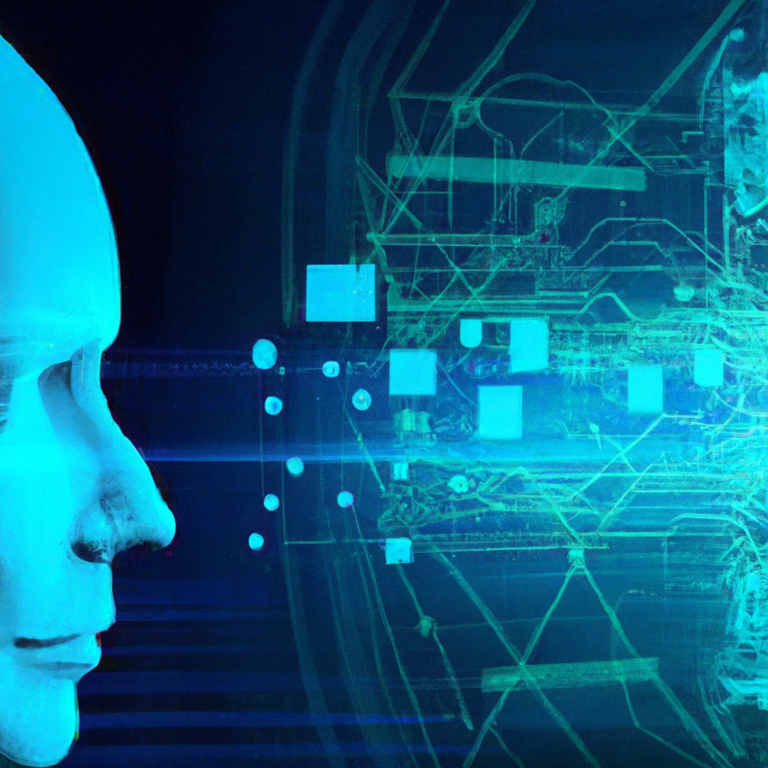AI And The Impact Of AI On The Environment: How Can AI Help Us Reduce Our Impact On The Planet?

AI, or artificial intelligence, has become an integral part of our lives, revolutionizing the way we work, communicate, and live. But have you ever stopped to think about the impact of AI on our environment? It turns out that AI not only has the potential to transform our world but also help us reduce our impact on the planet. In this article, we will explore how AI can be harnessed to tackle environmental challenges and pave the way toward a more sustainable future.

Understanding AI
Definition and concept of AI
Artificial Intelligence (AI) refers to the simulation of human intelligence in machines that are programmed to think, learn, and problem-solve like humans. It involves the creation of intelligent systems that can analyze data, make decisions, and perform tasks without explicit human intervention. These systems are designed to mimic human cognitive abilities such as perception, reasoning, and learning.
History and development of AI
The development and evolution of AI can be traced back to the 1950s when scientists and researchers began exploring the concept of building machines that can exhibit intelligent behavior. Over the years, AI has witnessed significant advancements due to developments in computing power, data availability, and algorithmic innovations. From expert systems to machine learning and deep learning algorithms, AI has become an integral part of various sectors, transforming industries and revolutionizing the way we work and live.
The Environmental Impact of AI
Energy consumption of AI systems
AI systems, particularly deep learning models, require substantial computational power to process and analyze large datasets. Consequently, energy consumption by AI systems has become a growing concern. The powerful hardware and constant processing required by AI contribute to significant energy usage, leading to an increase in greenhouse gas emissions and carbon footprint.
Carbon footprint of AI
The carbon footprint of AI includes not only the energy consumption of AI systems but also the emissions associated with the manufacturing and disposal of hardware components. From the production of semiconductors to the energy-intensive data centers that power AI systems, the carbon footprint of AI technologies can be substantial. It is crucial to address this environmental impact to ensure the sustainability of AI deployment.
E-waste generated by AI technology
The rapid pace of technological advancements and the constant need for hardware upgrades contribute to the generation of electronic waste (e-waste). AI technology, with its reliance on powerful computing systems and hardware components, contributes to the accumulation of e-waste. Proper disposal and recycling of e-waste are essential to prevent environmental pollution and resource depletion.
AI for Sustainable Energy Management
Optimizing energy consumption through AI
AI can be leveraged to optimize energy consumption and reduce waste in various sectors. By analyzing data and patterns, AI algorithms can identify and implement energy-saving strategies in buildings, industries, and homes. From optimizing HVAC systems to controlling lighting and appliances, AI can contribute to significant energy efficiency improvements and cost savings.
AI-based smart grids and energy distribution
AI-based smart grids play a crucial role in the efficient distribution of energy. These systems use AI algorithms to analyze real-time data from various sources, such as power generation, energy demand, and weather conditions. By dynamically adjusting energy flow and optimizing distribution, smart grids can reduce energy losses and improve overall energy management.
Renewable energy integration using AI
Integrating renewable energy sources, such as solar and wind power, into the existing energy grid poses unique challenges. AI can assist in optimizing the integration of renewable energy by predicting generation patterns, managing storage systems, and balancing energy demand. By leveraging AI algorithms, renewable energy sources can be effectively harnessed, leading to a more sustainable and greener energy mix.

AI for Waste Reduction and Recycling
Improving waste management systems with AI
AI can enhance waste management systems by enabling real-time monitoring, analysis, and optimization of waste collection and disposal processes. By utilizing sensors and data analytics, AI can identify optimal collection routes, optimize waste bin capacities, and streamline waste management operations. This leads to improved efficiency, reduced costs, and minimized environmental impact.
AI-driven recycling technologies
Recycling plays a vital role in reducing waste and conserving resources. AI can be used to identify and sort recyclable materials more efficiently, reducing contamination and improving recycling rates. Machine learning algorithms can analyze images of waste and classify them into different categories, facilitating automated sorting processes and enhancing the overall recycling efficiency.
Smart sorting and processing of recyclables with AI
AI-powered systems can optimize the sorting and processing of recyclables by utilizing machine learning algorithms to identify, sort, and separate different types of materials. This technology enables accurate sorting and maximizes the recovery of valuable resources. With AI-driven smart sorting systems, recycling facilities can improve the quality of recycled materials and minimize waste sent to landfills.
AI for Precision Agriculture
Monitoring and optimizing crop conditions with AI
Precision agriculture involves the use of AI and advanced technologies to monitor and optimize crop conditions. AI algorithms can analyze various data sources, including satellite imagery, sensors, and weather data, to provide real-time insights into crop health, soil conditions, and irrigation needs. By optimizing inputs and adjusting farming practices based on AI-driven recommendations, farmers can increase yields, reduce resource usage, and minimize environmental impact.
AI-powered pest and disease detection
Early detection of pests and diseases is crucial for effective crop management and reducing the need for chemical pesticides. AI can help in the automated detection of pests and diseases by analyzing images or data collected from sensors and drones. By identifying potential threats at an early stage, AI can enable targeted interventions and reduce the environmental impact of agricultural practices.
Efficient water and fertilizer management with AI
Water and fertilizer management play a significant role in sustainable agriculture. AI algorithms can analyze data from soil moisture sensors, weather forecasts, and plant physiology to optimize irrigation and fertilization practices. By precisely determining the water and nutrient requirements of crops, AI can minimize resource wastage and ensure efficient use of water and fertilizers, thus promoting sustainable farming practices.
AI for Sustainable Transportation
AI in traffic management and congestion reduction
AI can play a critical role in optimizing traffic flow and reducing congestion in urban areas. By analyzing real-time traffic data and historical patterns, AI algorithms can optimize traffic signal timings and suggest alternative routes to minimize travel times and fuel consumption. AI-based traffic management systems can lead to smoother traffic flow, reduced emissions, and improved overall transportation efficiency.
Autonomous vehicles and their environmental benefits
The development of autonomous vehicles powered by AI holds immense potential for sustainable transportation. By optimizing routes, minimizing fuel consumption, and reducing human error, autonomous vehicles can contribute to significant energy savings and emissions reduction. Shared autonomous vehicles can further enhance sustainability by maximizing vehicle utilization and reducing the number of vehicles on the road.
Efficient route planning and logistics using AI
AI can optimize route planning and logistics operations in transportation, leading to enhanced efficiency and reduced environmental impact. By considering various factors such as traffic conditions, delivery schedules, and vehicle capacities, AI algorithms can generate optimal routes, minimize fuel usage, and optimize the allocation of resources. AI-driven route planning systems can contribute to greener and more sustainable transportation practices.
AI for Environmental Monitoring and Conservation
Remote sensing and satellite imagery analysis with AI
AI can be employed to analyze remote sensing data and satellite imagery to monitor and assess environmental changes. From deforestation and land-use changes to water quality and air pollution, AI algorithms can process vast amounts of data and provide valuable insights into environmental conditions. This enables proactive conservation efforts, early detection of environmental threats, and effective ecosystem management.
AI-based wildlife protection and habitat monitoring
AI has the potential to revolutionize wildlife protection and habitat monitoring efforts. By analyzing camera trap images, acoustic recordings, and satellite data, AI algorithms can identify and track species, detect illegal activities such as poaching, and monitor changes in biodiversity. AI-driven wildlife protection systems can aid conservation efforts by providing real-time information and enabling timely interventions to protect endangered species and their habitats.
Early detection of natural disasters using AI
AI can assist in the early detection and prediction of natural disasters, including wildfires, floods, and earthquakes. By analyzing real-time data from various sources, such as weather sensors, satellite imagery, and historical records, AI algorithms can identify patterns and anomalies that indicate the likelihood of a disaster. Early detection enables timely evacuation measures and preparedness, potentially saving lives and minimizing the environmental impact of disasters.
AI for Sustainable Manufacturing
Optimizing energy consumption in manufacturing processes
AI can optimize energy consumption in manufacturing by analyzing production data, identifying energy-intensive processes, and suggesting energy-saving measures. By leveraging AI algorithms, manufacturers can identify inefficiencies, optimize equipment performance, and reduce energy waste. This leads to significant cost savings and a reduced environmental footprint for the manufacturing industry.
AI-driven predictive maintenance to reduce waste
Predictive maintenance using AI algorithms can help reduce waste in manufacturing processes by identifying and addressing potential equipment failures before they occur. By analyzing sensor data and machine performance indicators, AI can predict maintenance needs, minimize unplanned downtime, and prevent unnecessary repairs. This improves equipment lifespan, reduces waste generation, and enhances overall manufacturing efficiency.
Smart supply chain management with AI
AI can optimize supply chain management by analyzing data from various sources, including production schedules, inventory levels, and customer demand. By using AI algorithms to predict demand patterns, optimize inventory levels, and streamline logistics operations, manufacturers can minimize waste, reduce transportation emissions, and enhance supply chain sustainability.
The Role of AI in Circular Economy
Enhancing resource efficiency through AI
AI can play a vital role in enhancing resource efficiency by optimizing resource consumption, reducing waste, and promoting circular economy principles. Through real-time monitoring, data analysis, and predictive modeling, AI can enable the efficient use of resources, improve material recovery, and minimize resource depletion. By driving resource efficiency, AI contributes to a more sustainable and circular economic model.
AI-powered product lifecycle management
AI can facilitate product lifecycle management by analyzing data on product usage, performance, and maintenance requirements. By leveraging AI algorithms, manufacturers can optimize product design, extend product lifespan through predictive maintenance, and enable effective end-of-life management, including recycling and remanufacturing. AI-powered product lifecycle management promotes resource conservation and reduces environmental impact throughout a product’s lifespan.
Reverse logistics and circular design with AI
Reverse logistics, which involves the management of product returns and end-of-life processes, is crucial for implementing circular economy principles. AI can assist in optimizing reverse logistics by analyzing data on product returns, refurbishment opportunities, and recycling options. By leveraging AI algorithms, companies can streamline reverse logistics operations, improve remanufacturing processes, and maximize resource recovery. AI-driven circular design approaches also enable the development of products that are easy to disassemble, repair, and recycle, further enhancing circular economy initiatives.
Challenges and Considerations
Ethical implications of AI for the environment
As AI continues to advance, ethical considerations related to environmental impact must be addressed. The development and deployment of AI should emphasize sustainability, ensuring that AI technologies are designed and used in ways that minimize harm to the environment. Additionally, ethical questions regarding the use of AI in wildlife monitoring, conservation, and eco-system management should be carefully considered to strike a balance between AI advancements and environmental ethics.
Data privacy and security concerns with AI
The increasing reliance on AI technologies raises concerns about data privacy and security. AI systems require vast amounts of data to train and operate effectively, making data protection and privacy of critical importance. Safeguarding sensitive environmental data, ensuring secure data storage, and implementing robust cybersecurity measures are essential to maintain public trust and ensure the responsible use of AI for environmental purposes.
Balancing AI advancements with human intervention
While AI offers immense potential for sustainable development and environmental management, it is crucial to strike a balance between AI advancements and human intervention. Human oversight is necessary to ensure that AI systems operate ethically, address societal needs, and align with environmental goals. Collaboration between AI experts, environmental scientists, and policymakers is essential to harness the benefits of AI while ensuring that human values and environmental considerations guide AI development.
In conclusion, AI has the potential to revolutionize environmental management and contribute to a more sustainable future. From optimizing energy consumption and waste reduction to enabling precision agriculture and sustainable transportation, AI offers innovative solutions to address environmental challenges. However, it is important to address the environmental impact of AI itself, consider ethical and privacy concerns, and strike a balance between AI advancements and human intervention. By leveraging AI responsibly and ethically, we can harness its potential to reduce our impact on the planet and build a more sustainable future.
Want to write articles like us? Get your copy of AI WiseMind here!






